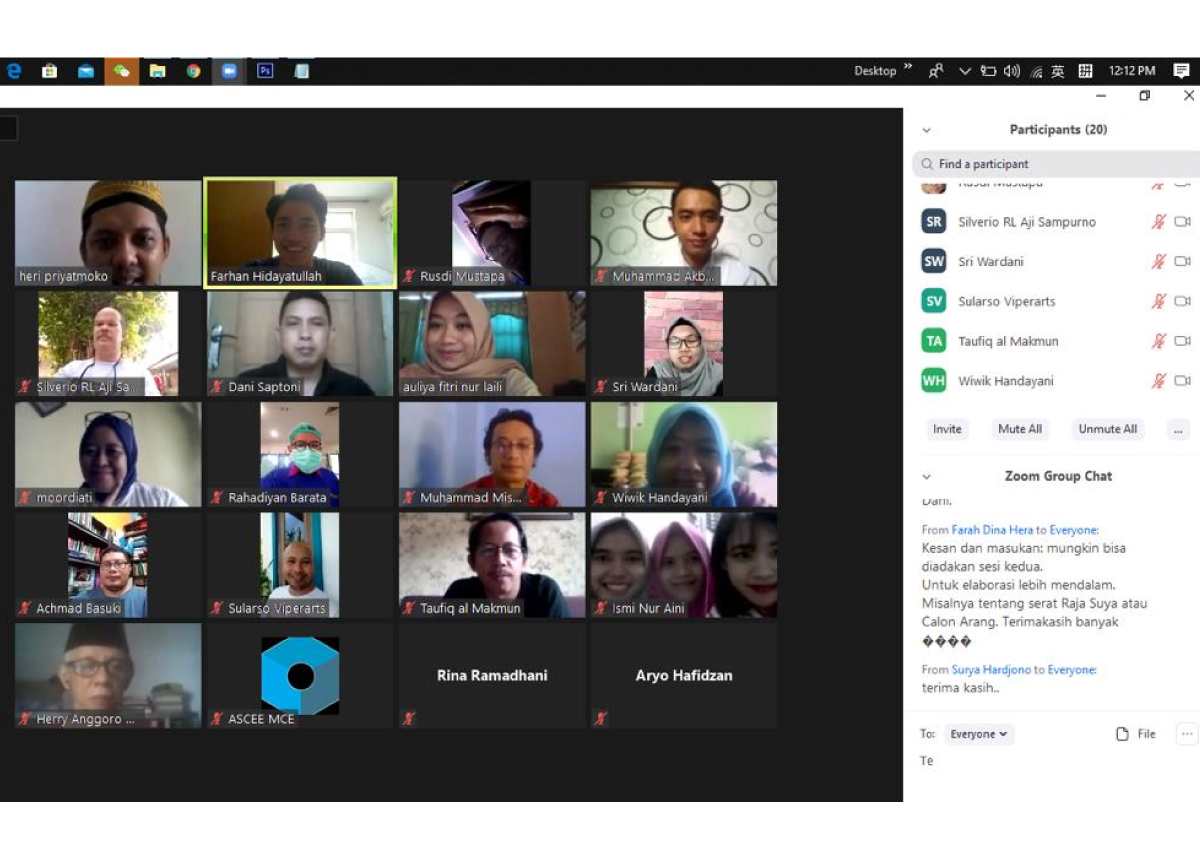
The Association for Scientific Computing Electronics and Engineering (ASCEE) Chinese Student Branch, together with Solo Societeit, held a National Webinar themed "Oral Traditions and Myth of Pagebluk in Java." The activity, which was supported by the UNSRI Imasfek (Faculty of Economics Student Association), and the Indonesia Students and Youth Forum (ISYF) was held online on June 28, 2020. This collaboration webinar was the first time it was held. Farhan Hidazatullah, Chair of the Webinar, said, "the purpose of this activity is to know the story of the Pagebluk in the past and to know the various myths that surround it. Our understanding of the global pandemic and the attitudes of past generations towards embodies is revealed in this national webinar. " He said.
This webinar presents two speakers: Heri Priyatmoko (History Lecturer at Sanata Dharma University Yogyakarta) with a theme around "Facts and Myth of Pagebluk in Java." This session explores the myth and reflects the history of Pagebluk. Heri Priyatmoko said, "it is rare to give a stage to myths or Gugon Tuhon in seeing Pagebluk, there is an assumption that myths living in the memory of Javanese people are not valuable facts." He said.
In delivering the material, Heri Priyatmoko alluded to, "a lot of people's behaviour in the past is difficult to reason, aka ora tinemu nalar." He gave an example of drinking banyu umbul and bathing in Pengging and Langenharjo, and looking for grass (suket) Teki to be used as ingredients. According to Heri Priyatmoko, in historical records at that time, the action was believed to be able to ward off disease. With such historical facts, Heri Priyatmoko also encouraged medical circles to conduct research on spring water source (umbul), and grass (suket) Teki for the benefit of eastern knowledge.
The second speaker, Dani Saptoni, Solo Societeit manuscript researcher, raised the material about "Pagebluk in the Java World." This session explores the meaning of Pagebluk from the perspective of Javanese Kawuruh. "Pagebluk is interpreted not only in terms of health but in human life," he said. Dani Saptoni said the concept of Kawruh Java was built from five elements, reaction to surrounding phenomena, defining phenomena that occur, efforts to maintain balance, create awareness of science, and merge in balance. According to Dani Saptoni, Pagebluk is an "alarm" when harmony experiences an imbalance. Dani Saptoni explained, Pagebluk in the Javanese tradition, in various forms, Memala, Sukerta, Lara Pataka, Rajapati, and the distribution of media also varied through teluh, sawan, supernatural creatures.
The National Webinar moderated by M. Akbar Nurfauzan, Palembang Tourism Polytechnic Student, was attended by 30 participants, from various professions, researchers, lecturers, teachers, students, and historical observers. Moordiati, a lecturer in history at Airlangga University Surabaya who participated in the webinar, had a positive impression, "the material presented by the speakers was exciting and comprehensive," he said in a question and answer session.
In a concluding message, Heri Priyatmoko conveyed, if this webinar invited participants to be more critical in reading historical facts recorded in data in the form of fibre and contemporary newspapers. According to him, in addition to expanding public insight about the disease. This webinar also serves as a space for exchanging knowledge about data that can be used for thesis material, scientific journals, and other interests. "In this activity, we hope we receive good benefits," he said.